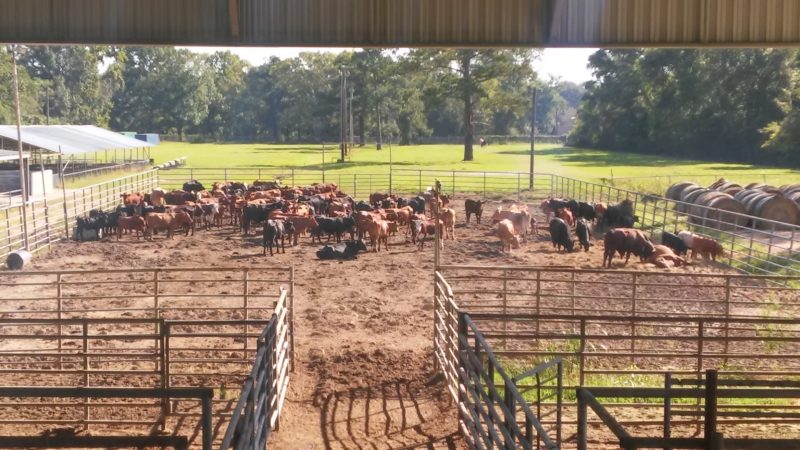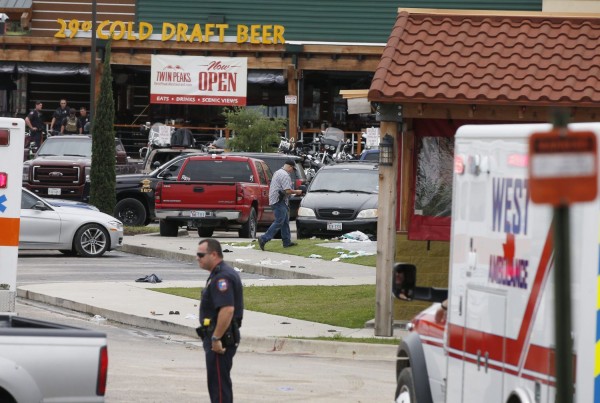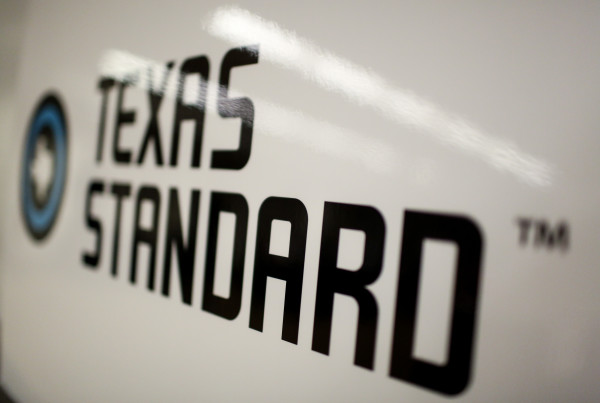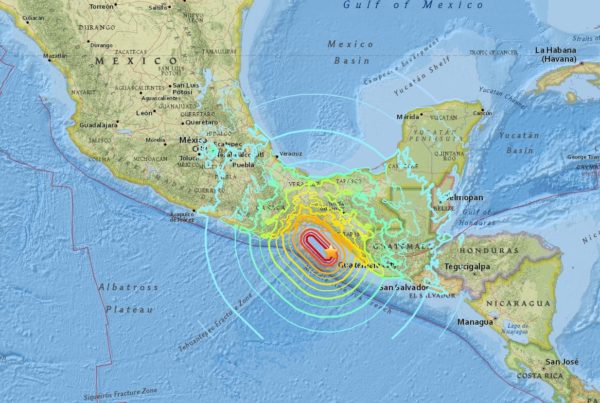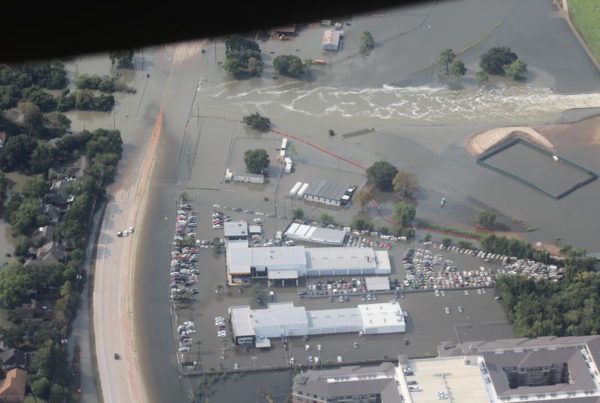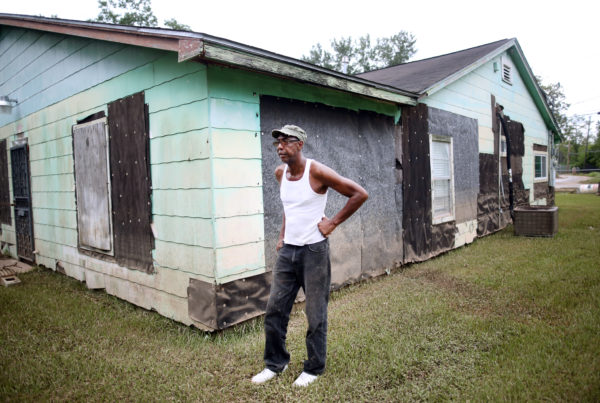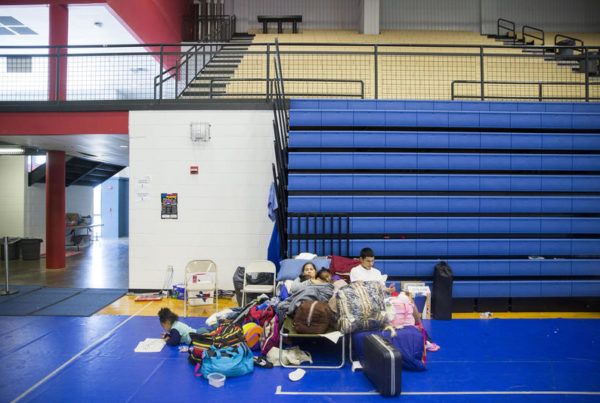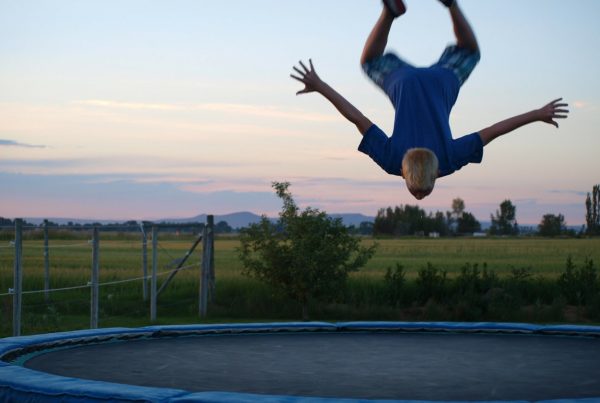It wasn’t just people that were affected by Hurricane Harvey. Cattle throughout south Texas were also put in harm’s way. But even though the water has receded, the storm’s full effect on the region’s livestock may not be known for some time.
At the Dayton Future Farmers of America Arena, a giant aluminum stadium about 45 miles west of Beaumont, Roy Flora lets 140 head of cattle out of their pen. But only for a little while. The place these cows normally live is now flooded, thanks to Harvey. The cows are staying at the arena until their pasture dries out. Flora, the Texas A&M Agrilife Extension agent for Liberty County, is looking after them. And these cows aren’t used to being penned in, or being around people.
“This guy was telling me these cows have only…they only see people twice a year where they’re at,” Flora says. “They gather them up in the spring, work the calves, turn them back out. And then in the fall they gather them up, take the calves off. So you can some of them are still a little flighty as we walk around here.”
You can imagine how happy they are when Flora releases them into a small pasture behind the big stadium. The calves are jumping on mounds of hay and hassling each other. The bulls trot around, munching on grass. But then Flora notices that one cow hasn’t left the enclosure – hasn’t even gotten up, in fact. It’s lying on a mound of hay, toward the back of the pen.
“Yup,” Flora syas. “When their tongue’s hanging out that’s a pretty good indicator. He’s been down a while. His rectum’s already starting to open up. Now we gotta call the city and get him disposed of – that’s an ordeal.”
It’s a Red Brangus bull, about five or six years old. He’s a reddish-brown color, with horns about two inches long. Flora says some teenagers dropped him off about a week ago. They’d found him near the Harris County line, but couldn’t find the owner.
“When they found him he’d been kinda belly deep in water,” Flora says. “They also had a cow that they’d found. They dropped the cow off at the vet and she died, she had gotten water in her lungs. He was just kinda weak. I mean you can tell by the condition of his skin – it’s starting to dry and crack. That was probably starting to take a toll.”
During Harvey, cattle and other livestock in southeast Texas were swept away. Some drowned – the exact numbers aren’t known yet, although state agricultural officials are still counting. But the vast majority survived. And while much of the water has receded, the hazards the storm brought to livestock in the region haven’t. Stress, which surviving a tropical storm could induce, can be fatal to cows. They can develop respiratory problems when they’re in close quarters with other cattle.
“There’s another disease called red water,” Flora says. “The signs of it is the animal starts to urinate and it looks red. It happens a lot from them drinking their own urine. And now you’ve got standing water – if you had standing water you’re going to be drinking from that. Any hay that got in standing water can start to harbor tuberculosis. And if you get snakes and rats and things that go up in there looking for refuge, and then you get botulism.”
It’s not a stretch to say that the most dangerous days for cattle in the path of Harvey are still ahead. The storm itself was deadly. You can still see cows lying on the side of the road, swollen and alone. But ranchers don’t have time to mourn the cows they lost. In the wake of such a catastrophic storm, they’ve got to focus on the cattle that are still alive.
That’s what Chuck Kiker has done since the hurricane hit. I met him on a ranch his uncle works on, where he was moving big, square bales of alfalfa off a flatbed trailer.
“Hay came from all over the state of Texas, all over the country,” Kiker says. “This alfalfa came from Idaho. Who’d have ever thought?”
Kiker was lucky. He farms and raises cattle in west Jefferson County, and he came through the storm unscathed. He’s spent the past week or so helping his neighbors. One of the big problems has been hay. Harvey wiped out a lot of the hay in the area, so Kiker has been helping distribute donated hay that’s been coming in from New York, Ohio, Indiana, Oklahoma and all over the country.
“It’s going to take a lot of these animals a while to recover – take a lot of these ranchers a while to recover,” he says. “I’ve handled more square bales in the last week than I have in the last twenty years.”
Still, bringing in enough quality hay will be a problem. And keeping animals healthy and stress-free in the coming weeks and months will also be a problem. But these are not insurmountable problems.
Further north in Kountze, a group of FFA kids set up a supply point where local ranchers can come get feed and other supplies, free of charge. One of the kids is Christopher Langston, a junior at Kountze High School who once showed the grand champion market steer at the Southeast Texas State Fair. He said that right now, his community is just on survival mode, able to do just enough to keep their animals alive.
“There’s a lot of rebuilding to do but something that’s reassured me is how much our community has backed us and supported us,”Langston says. “And it’s just been amazing to see the support we’ve got from everyone in the community. We just have to go and start rebuilding. But it will get done.”
The cost of that rebuilding is still being tallied. But if other storms are any indication, it won’t be cheap. In 2008, Hurricane Ike caused over $65 million worth of cattle losses in Texas. And Ike was the worst storm some ranchers in southeast Texas had ever seen. Until Harvey came. In Beaumont,


